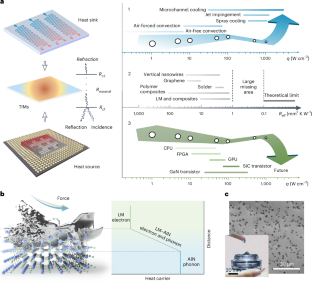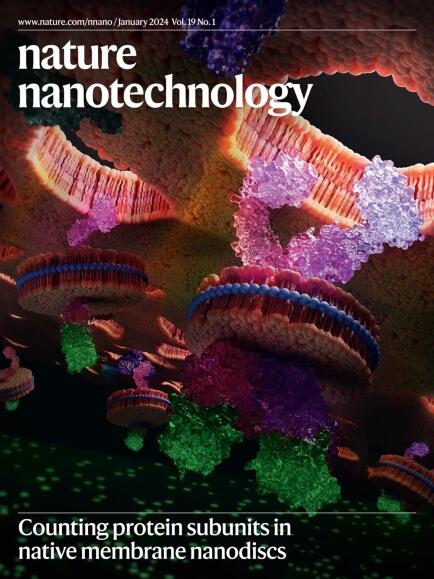Mechanochemistry-mediated colloidal liquid metals for electronic device cooling at kilowatt levels
IF 38.1
1区 材料科学
Q1 MATERIALS SCIENCE, MULTIDISCIPLINARY
引用次数: 0
Abstract
Electronic systems and devices operating at significant power levels demand sophisticated solutions for heat dissipation. Although materials with high thermal conductivity hold promise for exceptional thermal transport across nano- and microscale interfaces under ideal conditions, their performance often falls short by several orders of magnitude in the complex thermal interfaces typical of real-world applications. This study introduces mechanochemistry-mediated colloidal liquid metals composed of Galinstan and aluminium nitride to bridge the practice–theory disparity. These colloids demonstrate thermal resistances of between 0.42 and 0.86 mm2 K W−1 within actual thermal interfaces, outperforming leading thermal conductors by over an order of magnitude. This superior performance is attributed to the gradient heterointerface with efficient thermal transport across liquid–solid interfaces and the notable colloidal thixotropy. In practical devices, experimental results demonstrate their capacity to extract 2,760 W of heat from a 16 cm2 thermal source when coupled with microchannel cooling, and can facilitate a 65% reduction in pump electricity consumption. This advancement in thermal interface technology offers a promising solution for efficient and sustainable cooling of devices operating at kilowatt levels. This study introduces mechanochemistry-mediated colloidal liquid metals to enhance interface thermal transport in scalable electronic systems, offering an efficient cooling solution for thermal management in devices operating at kilowatt levels.


机械化学介导的胶体液态金属用于千瓦级电子设备冷却
在高功率水平下运行的电子系统和设备需要复杂的散热解决方案。虽然在理想条件下,高热导率材料有望在纳米和微米级界面上实现卓越的热传输,但在实际应用中典型的复杂热界面上,它们的性能往往相差几个数量级。本研究介绍了由 Galinstan 和氮化铝组成的机械化学介导的胶体液态金属,以弥合实践与理论之间的差距。这些胶体在实际热界面中的热阻介于 0.42 和 0.86 mm2 K W-1 之间,比主要热导体的热阻高出一个数量级以上。这种优异的性能归功于梯度异质界面在液固界面上的高效热传输以及胶体显著的触变性。在实际设备中,实验结果表明,当与微通道冷却相结合时,它们能从 16 平方厘米的热源中提取 2,760 W 的热量,并能将泵的耗电量降低 65%。热界面技术的这一进步为千瓦级设备的高效和可持续冷却提供了一个前景广阔的解决方案。
本文章由计算机程序翻译,如有差异,请以英文原文为准。
求助全文
约1分钟内获得全文
求助全文
来源期刊

Nature nanotechnology
工程技术-材料科学:综合
CiteScore
59.70
自引率
0.80%
发文量
196
审稿时长
4-8 weeks
期刊介绍:
Nature Nanotechnology is a prestigious journal that publishes high-quality papers in various areas of nanoscience and nanotechnology. The journal focuses on the design, characterization, and production of structures, devices, and systems that manipulate and control materials at atomic, molecular, and macromolecular scales. It encompasses both bottom-up and top-down approaches, as well as their combinations.
Furthermore, Nature Nanotechnology fosters the exchange of ideas among researchers from diverse disciplines such as chemistry, physics, material science, biomedical research, engineering, and more. It promotes collaboration at the forefront of this multidisciplinary field. The journal covers a wide range of topics, from fundamental research in physics, chemistry, and biology, including computational work and simulations, to the development of innovative devices and technologies for various industrial sectors such as information technology, medicine, manufacturing, high-performance materials, energy, and environmental technologies. It includes coverage of organic, inorganic, and hybrid materials.
 求助内容:
求助内容: 应助结果提醒方式:
应助结果提醒方式:


